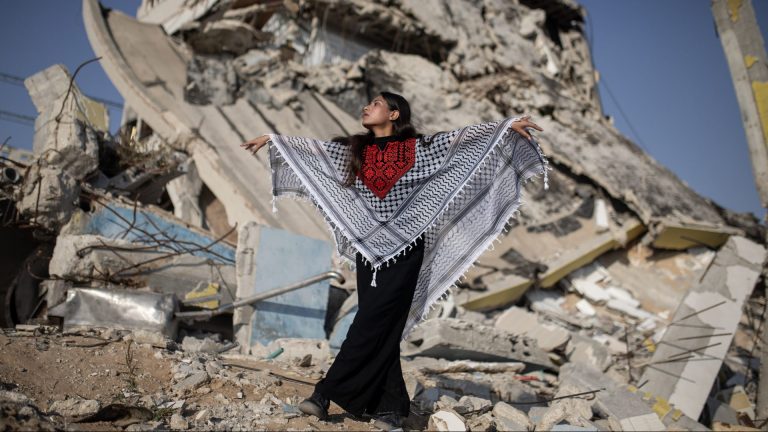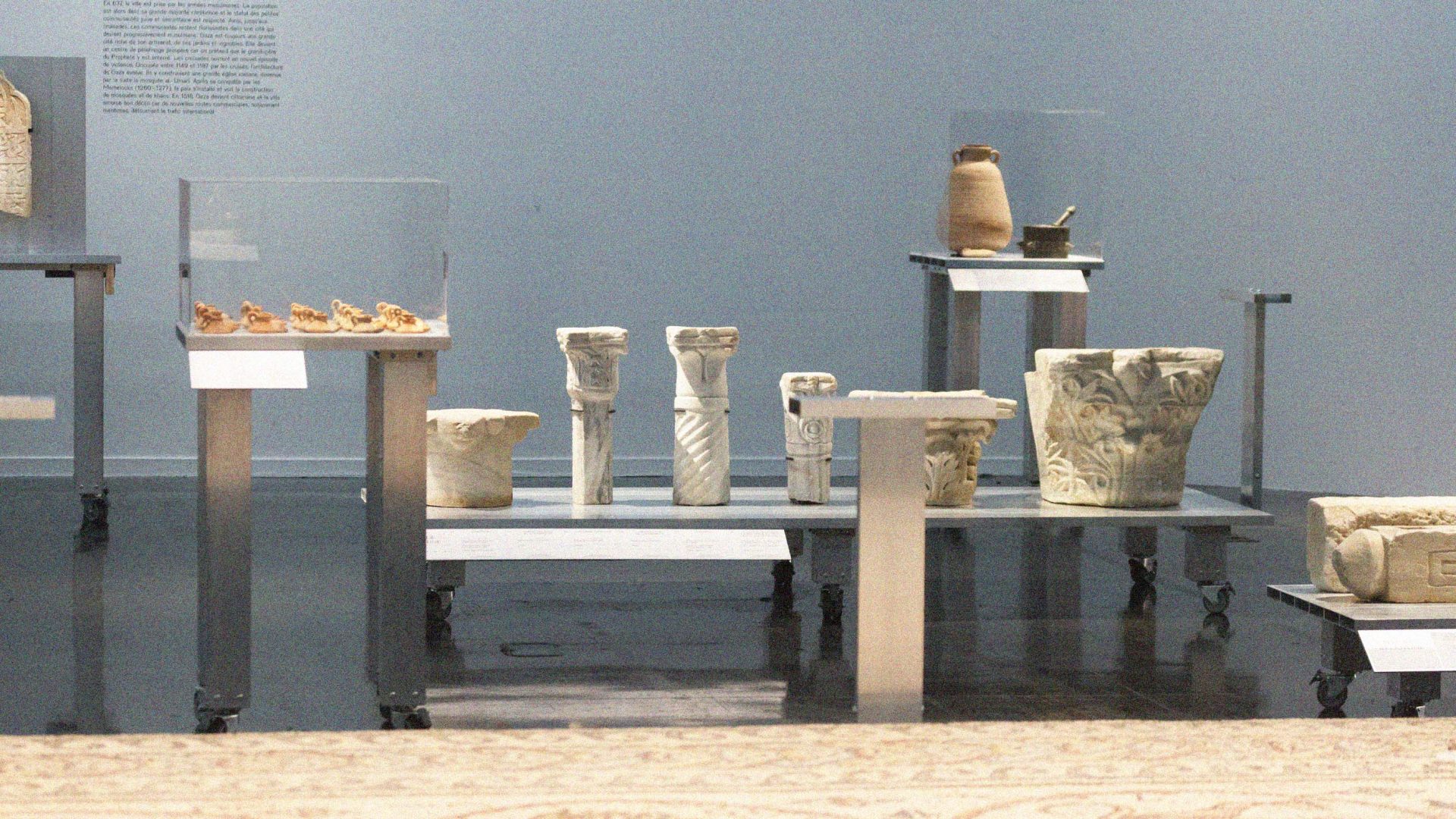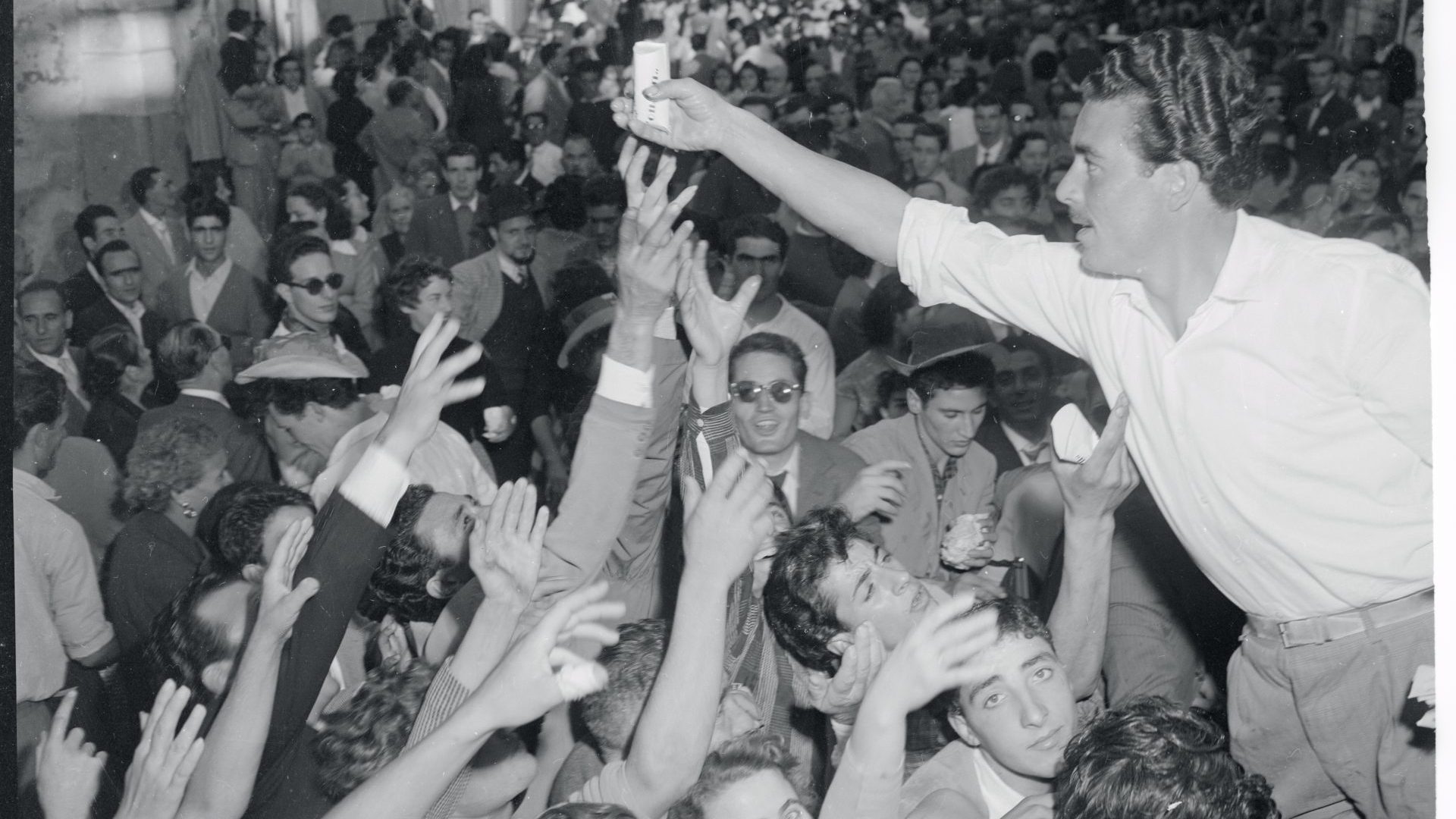I looked at the map of Gaza in an exhibition at Paris’s Institut du Monde Arabe: it shows the findings of a Unesco survey into the condition of historic sites across the strip. They’re divided into categories from gravement endommagé (severely damaged) to the green square representing non endommagé.
The maps show how things were back in May. The situation now is even worse. Last month, Israel announced that it would bomb a tower that it deemed was part of “Hamas terrorist infrastructure”. It was housing thousands of Palestine’s remaining treasures, prompting a race against time to rescue as many as possible. Estimates say 60% were saved.
Viewing the Trésors Sauvés de Gaza (Gaza’s Saved Treasures) exhibition, the maps showed clearly that Gaza’s rich history has been under intermittent assault for decades. For that reason, some of its most important archaeological finds have been kept safe far from the strip.
The principal exhibits had been in storage in Geneva for 17 years. These included a small marble statue of the Goddess Aphrodite, or possibly Hecate. As she saw the light of day once more, I was struck by her enigmatic character, one hand held lazily behind her protruding right hip, the other resting on the head of a manifestly male figure.
The lead curator, Élodie Bouffard, sees that marble statuette as symbolic of Gaza’s multi-layered history. She was probably thrown into the sea during the enforced fifth-century Christianisation of the area, and was found by a fisherman 1,500 years later.
Much of the collection was assembled by a wealthy Palestinian property developer, Jawdat Khoudary, now in exile in Egypt. The pieces had been found by his workers over the years, as they dug the foundations of new buildings. The Palestinian Authority hoped the finds could form the centrepiece of a new museum, but when Hamas took control of the strip, everything stayed in Geneva, as its return was judged unsafe.
The sub-title of the Paris exhibition is “5,000 years of history”. Philistines, Assyrians, Romans, Persians and others all exploited Gaza’s strategic position as a bridging point between Europe and Asia: its lost port was once among the most important in the region. Bouffard described the exhibition as giving Gaza its history back: a celebration that would defy Gaza’s contemporary journey into tragedy and despair.
When Raphael Lemkin first drafted in 1944 the definition that would form the basis of the United Nations test of genocide – against which Israel was recently judged culpable for its actions in Gaza – his original words included the destruction of a people’s culture as a key component of the crime.
Lemkin had seen “cultural genocide”, or ethnocide, as an intrinsic part of the process of genocide, typified by the destruction of the language, religion or culture of an ethnic group.
Suggested Reading


Gaza and a dance against oblivion
The red squares on those maps showed where the Neolithic tombs, Byzantine churches and early monasteries had stood – until recently. All of these formed part of a rich mosaic of Palestinian cultural heritage. A huge sixth-century decorative mosaic, rescued from the remains of a church, is the centrepiece of the exhibition and seems an apt metaphor.
Queues to see the exhibition have swelled. Though Donald Trump has forged a ceasefire, the suffering in Gaza is not over, and as the attempt to rebuild the strip gets under way, the extent of the cultural vandalism will become clear. The exhibition runs until the end of November.
Stan Abbott is a journalist and author of travel narratives



